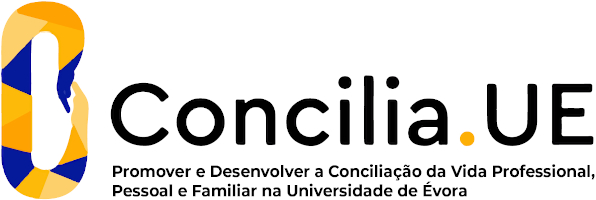2024
Mathematics Applied to Economics and Management II
Name: Mathematics Applied to Economics and Management II
Code: MAT02317L
6 ECTS
Duration: 15 weeks/156 hours
Scientific Area:
Mathematics
Teaching languages: Portuguese
Languages of tutoring support: Portuguese, English
Regime de Frequência: Presencial
Presentation
The purpose of this course is to transfer mathematical knowledge that can be developed and implemented in an economic context.
Sustainable Development Goals
Learning Goals
OBJECTIVES:
The objectives of this course are the following.
I. Exposure of the following mathematical contents: integral calculus in R; differential calculus in Rn; optimization in one variable; optimization in several variables; optimization with constraints.
II. Application of the mathematical concepts, methods and results in I to economic analysis.
COMPETENCES:
Apart from the acquisition of theoretical content programming, it is intended that students: use and interpret specific concepts and symbols of mathematics; describe with clarity and rigor of reasoning strategies that support problem solving; interpret and criticize the results; presents strategies for solving problems; make connections between mathematical concepts and economic concepts; solve problems in economic context by applying mathematical methods; acquire mathematical skills sufficient to read, understand and interpret some existing economic literature.
The objectives of this course are the following.
I. Exposure of the following mathematical contents: integral calculus in R; differential calculus in Rn; optimization in one variable; optimization in several variables; optimization with constraints.
II. Application of the mathematical concepts, methods and results in I to economic analysis.
COMPETENCES:
Apart from the acquisition of theoretical content programming, it is intended that students: use and interpret specific concepts and symbols of mathematics; describe with clarity and rigor of reasoning strategies that support problem solving; interpret and criticize the results; presents strategies for solving problems; make connections between mathematical concepts and economic concepts; solve problems in economic context by applying mathematical methods; acquire mathematical skills sufficient to read, understand and interpret some existing economic literature.
Contents
1. Integral Calculus in R (indefinite integral, techniques of integration, Riemann integral, geometric interpretation, integration techniques).
2. Comparative-Static analysis with several variables (implicit dependence, differential, point elasticity, total differentials, total derivatives, implicit function theorem, application to the comparative-static analysis).
3. Optimization - one choice variable (objective functions, choice variables, extreme values, stationary points, characterization of extreme values, convexity, concavity, profit and tax revenue maximization, derivatives of various orders, Taylor polynomials).
4. Optimization - several choice variables (second order partial derivatives, extreme values of a function of two variables, quadratic forms, objective functions with more than two variables, economic example: multiproduct firm).
5. Optimization with constraints (constraints, Lagrange multipliers, bordered Hessian, homogeneity, Cobb-Douglas and CES functions).
2. Comparative-Static analysis with several variables (implicit dependence, differential, point elasticity, total differentials, total derivatives, implicit function theorem, application to the comparative-static analysis).
3. Optimization - one choice variable (objective functions, choice variables, extreme values, stationary points, characterization of extreme values, convexity, concavity, profit and tax revenue maximization, derivatives of various orders, Taylor polynomials).
4. Optimization - several choice variables (second order partial derivatives, extreme values of a function of two variables, quadratic forms, objective functions with more than two variables, economic example: multiproduct firm).
5. Optimization with constraints (constraints, Lagrange multipliers, bordered Hessian, homogeneity, Cobb-Douglas and CES functions).
Teaching Methods
Teaching methods:
Oral presentation of theoretical concepts, exemplified by solving exercises and presenting applications to economics and management. To stimulate the activity of students so that it plays an important role during classes, namely to promote the submission of questions or suggestions of application and / or description of contents, the resolution of exercises - either individually or on the board - to participate in discussions, etc.
Oral presentation of theoretical concepts, exemplified by solving exercises and presenting applications to economics and management. To stimulate the activity of students so that it plays an important role during classes, namely to promote the submission of questions or suggestions of application and / or description of contents, the resolution of exercises - either individually or on the board - to participate in discussions, etc.
Assessment
Evaluation methods:
Continuous evaluation - 2 tests with equal weight in the final result (50%). A minimum classification of 8 marks is required in each test to obtain approval. The 2nd test is performed on the same day as the exam.
Exam regime - 1 exam with a weight of 100% in the final result.
The tests have 2 parts. The 1st is worth 14 marks and the 2nd worth 6 marks. The 2nd part will only be corrected if the student has 7 marks in the 1st. All tests have different versions.
Continuous evaluation - 2 tests with equal weight in the final result (50%). A minimum classification of 8 marks is required in each test to obtain approval. The 2nd test is performed on the same day as the exam.
Exam regime - 1 exam with a weight of 100% in the final result.
The tests have 2 parts. The 1st is worth 14 marks and the 2nd worth 6 marks. The 2nd part will only be corrected if the student has 7 marks in the 1st. All tests have different versions.
Teaching Staff
- Maria Clara da Palma Carlota [responsible]





















